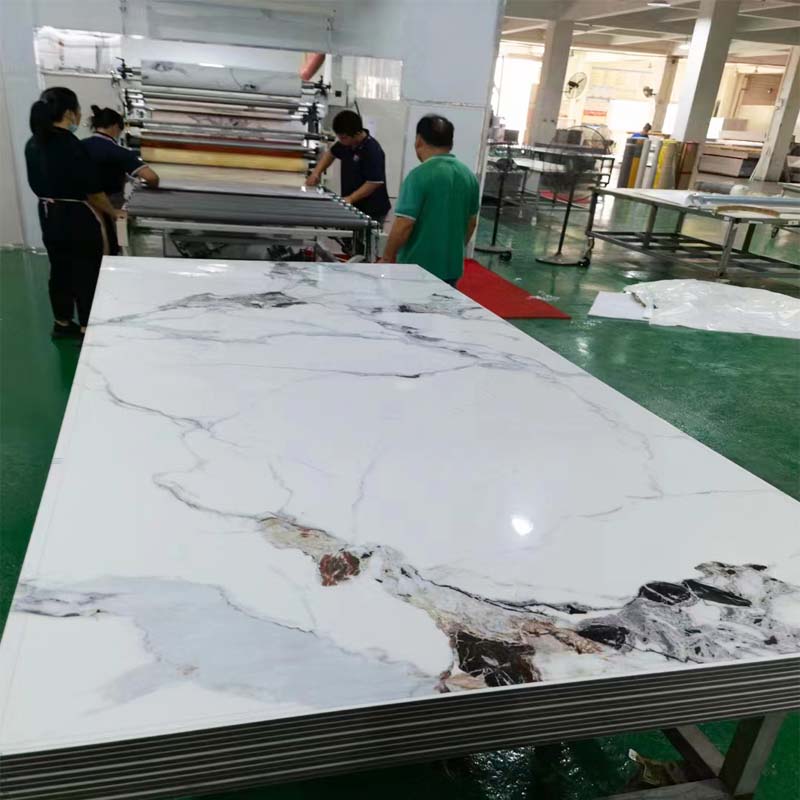Introduction:
Wood veneer is a popular choice for interior decoration due to its natural and elegant appearance. It is often used to enhance the aesthetics of furniture, cabinets, and other wooden surfaces. Bamboo charcoal wood veneer is a unique variant of wood veneer that offers several advantages over traditional wood veneers. In this in-depth review, we will explore the characteristics, benefits, and applications of bamboo charcoal wood veneer.

Characteristics:
Bamboo charcoal wood veneer is made by combining thin slices of bamboo charcoal with a wood veneer backing. Bamboo charcoal is a type of activated charcoal that is derived from bamboo plants. It is known for its porous structure, which allows it to effectively absorb moisture, odors, and harmful chemicals. The combination of bamboo charcoal and wood veneer creates a distinctive and visually appealing surface that adds a touch of sophistication to any space.
Benefits:
1. Moisture absorption: One of the key advantages of bamboo charcoal wood veneer is its excellent moisture absorption properties. The porous structure of bamboo charcoal allows it to absorb excess moisture in the air, helping to maintain a balanced and comfortable indoor environment. This can be particularly beneficial in areas with high humidity levels or during the rainy season.
2. Odor elimination: Bamboo charcoal is also effective in eliminating unpleasant odors. It absorbs and neutralizes odor-causing molecules, leaving the surrounding air fresh and clean. This makes bamboo charcoal wood veneer an ideal choice for spaces such as kitchens, bathrooms, and storage areas, where odors can be a recurring issue.
3. Chemical filtration: The porous nature of bamboo charcoal enables it to adsorb and filter out various harmful chemicals and pollutants. It can effectively remove volatile organic compounds (VOCs), formaldehyde, and other airborne toxins, improving indoor air quality and creating a healthier living environment.
4. Aesthetics: In addition to its functional benefits, bamboo charcoal wood veneer is visually appealing. The combination of the rich, dark color of bamboo charcoal and the natural grain pattern of wood creates a unique and luxurious appearance. It can instantly elevate the look of any space, adding depth and sophistication to furniture, cabinets, walls, and other surfaces.
Applications:
Bamboo charcoal wood veneer can be used in various applications, both residential and commercial. Some popular uses include:
1. Furniture: Bamboo charcoal wood veneer can be applied to the surfaces of tables, chairs, cabinets, and other furniture pieces. It adds a contemporary and refined touch to any interior design style, from modern to traditional.
2. Wall paneling: Covering walls with bamboo charcoal wood veneer can create a striking accent wall or a whole room with a unique ambiance. It can be used in living rooms, bedrooms, offices, or any other space where a distinctive visual impact is desired.

3. Cabinetry: Kitchen and bathroom cabinets can benefit from the moisture absorption and odor elimination properties of bamboo charcoal wood veneer. It not only enhances the aesthetics but also contributes to a healthier and more comfortable environment.
4. Retail spaces: Bamboo charcoal wood veneer can be used in retail settings, such as boutiques, showrooms, or cafes, to create a stylish and inviting atmosphere. Its natural elegance and ability to improve indoor air quality can enhance the overall shopping or dining experience for customers.
Conclusion:
Bamboo charcoal wood veneer offers a unique combination of aesthetics and functionality. Its moisture absorption, odor elimination, and chemical filtration properties make it a desirable choice for interior decoration. Whether used in furniture, wall paneling, cabinetry, or retail spaces, bamboo charcoal wood veneer adds a touch of luxury and sophistication while contributing to a healthier indoor environment. Consider incorporating bamboo charcoal wood veneer into your next interior design project for a truly remarkable and sustainable solution.
Previous: PVC Foam Board Sheet Manufacturers: Providing Top-Quality Products for Diverse Applications

China PVC bathroom partition board (red)
PVC (polyvinyl chloride) bathroom partitions are a popular choice for wet areas such as bathrooms, shower rooms, and swimming pool changing rooms. They are durable, easy to clean, and resistant to moisture and bedbugs. PVC bathroom partitions ...

PVC building formwork (wbt130)
PVC building formwork is a type of construction material used to shape and support concrete structures during the building process. It is a popular alternative to traditional formwork materials such as wood, steel, and aluminum, due to its numerous b...

Carbon crystal plate
product description: What is the material of the carbon crystal plate? The carbon crystal plate is made of natural bamboo powder, calcium powder, new polymer composite material, carbon crystal powder and PVC powder. The raw materials do not contain f...

Carbon crystal plate (wbt670)
product description: What is the material of the carbon crystal plate? The carbon crystal plate is made of natural bamboo powder, calcium powder, new polymer composite material, carbon crystal powder and PVC powder. The raw materials do not contain f...